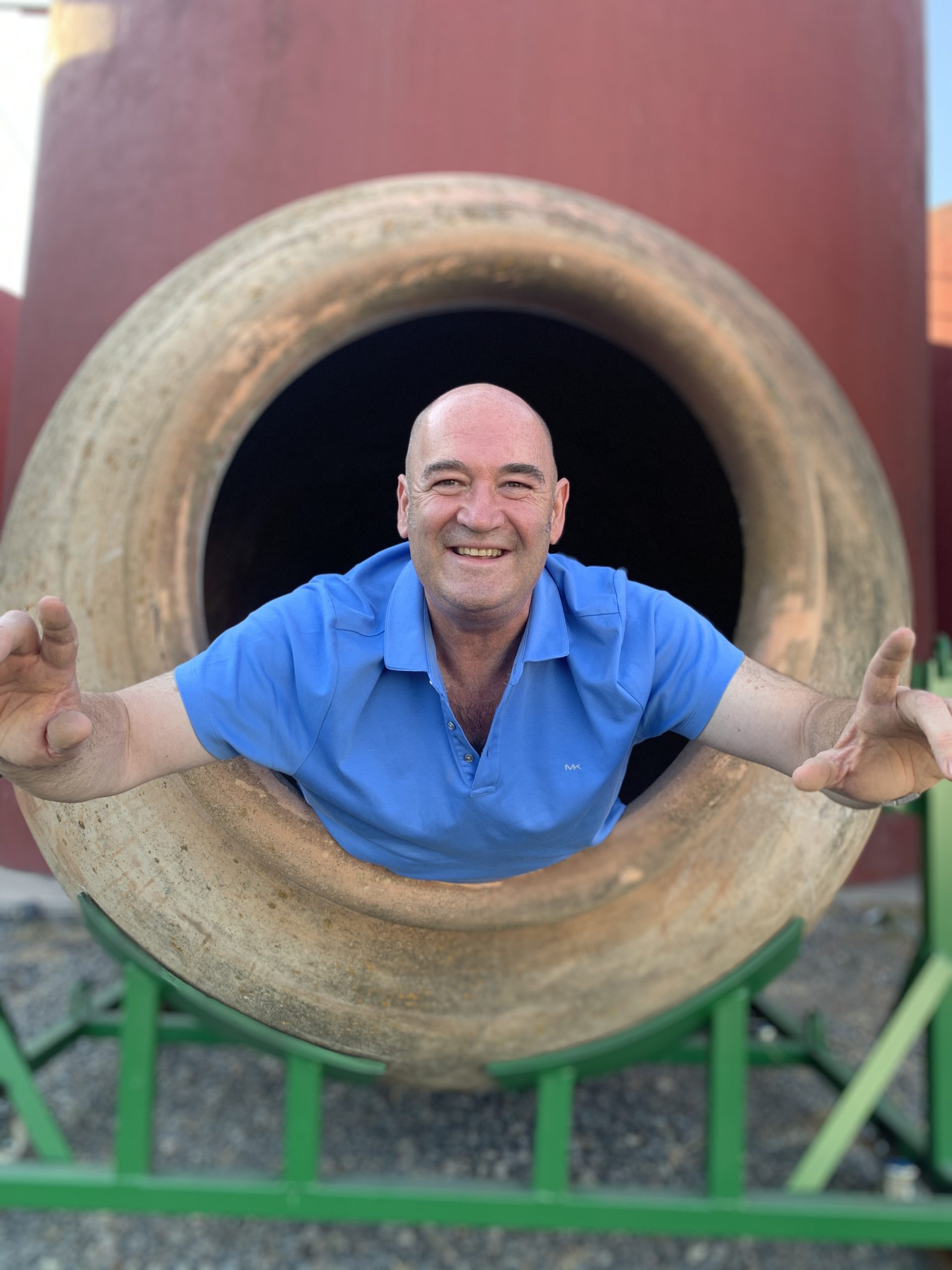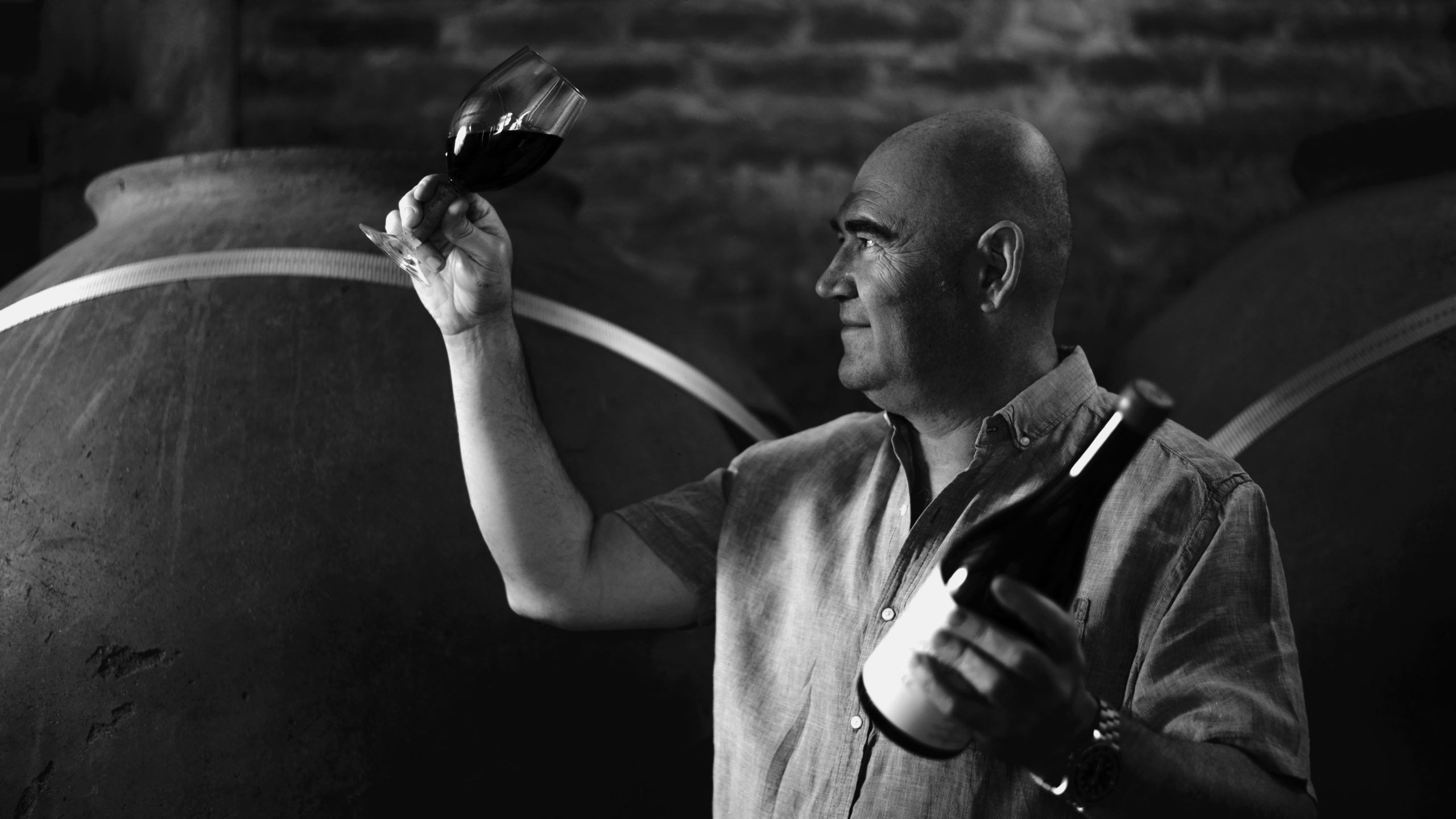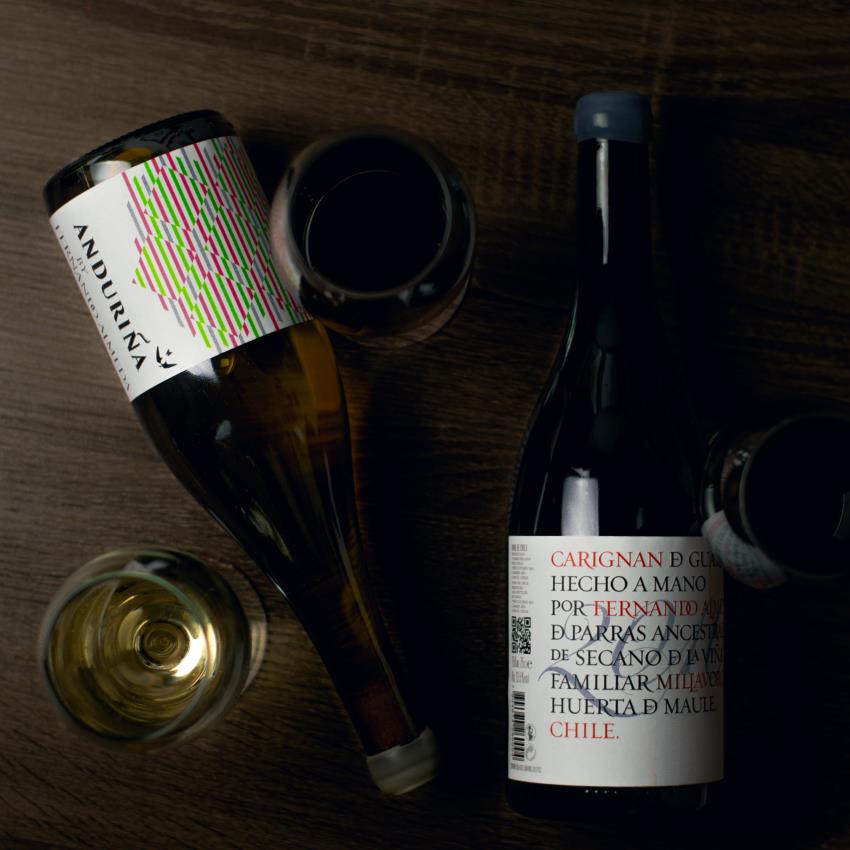Fernando Almeda has always seemed to me a bit like the Paddington Bear of the wine world – outwardly calm, matter-of-fact, businesslike and undramatic while inside he has this fun-loving, kind-hearted, inquisitive spirit that will always make him want to know what will happen if he presses that button, opens that sealed box or passes that “no entry” sign. So, perhaps it’s no surprise that when he left Miguel Torres Chile in 2018, having worked there pretty much his entire adult life, instead of choosing to get another stable winemaking job or maybe take it easy for a while, he decided to embark on a new, solo career of cool, adventurous wine projects.
With thirty years of winemaking experience behind him, his new path obviously had to include making a couple of wines of his own. And, as you’d expect of someone with his expertise, they are deftly made, elegant and understated. The first is a white called Anduriña made with Chilean Albariño grapes. It has a clean, pure grapefruit profile with sharp, citrus-flavoured acidity not unlike some Sauvignon Blanc wines, though it features more body, length and personality than many of its Sauvignon Blanc rivals. Definitely one to pair with ceviche or citrus-dressed salads. The red is a Carignan made with grapes from his own small, dry-farmed, bush-trained vineyard in Maule. Millavoro is an elegant, restrained wine, light in colour and body, with smooth tannins and juicy acidity. I’d be inclined to pair it with leaner cuts of red meat, even turkey but in fact, I found it went surprisingly well with a hearty vegan Chilean bean and pumpkin dish known as porotos granados.
But these low-intervention wines he’s making in a small warehouse near his home in Curicó are just the start. Fernando has also embraced a project on sub-tropical Easter Island (aka Rapa Nui), along with agronomists Álvaro Arriaga and Poky Tane Haoa. They have rescued genetic material from old vines discovered growing wild in the crater of the Rano Kau volcano and have planted a 2-hectare experimental vineyard with cuttings from those as yet unidentified vines, along with Chardonnay and Pinot Noir.
The latter – particularly the pernickety Pinot Noir – may seem an odd choice of varieties for the warm, humid and windy conditions of a sub-tropical island, but the trio have decided to make Easter Island’s very own sparkling wine, which will undoubtedly be a hit with the thousands of tourists who flock there every year. So they selected these classic sparkling wine varieties because they have a short cycle from budburst to maturity and are suitable for picking early to retain the piercing acidity needed for base wine for fizz. And, because clearly all this isn’t sufficiently innovative, these guys have come up with the crazy idea of putting the bottles into the sea to undergo the second, in-bottle fermentation. I wince to think of the potential for broken glass during high swells!
Another project takes Fernando to Itata for 3-4 days a month. In this case, he is working on an initiative organized and funded by two Chilean state organizations: Foundation for Agricultural Innovation (FIA) and the Institute of Agricultural Research (INIA). His brief is to provide practical, on-the-ground technical advice to small-scale wine producers there so they can improve the quality of their wines with a view to making them attractive to export markets and able to command a higher price.
Fernando explains that this region is home to around 5,000 of Chile’s 12,000 wine producers, the vast majority of them small-scale, long-standing family businesses that are continuing to make wine in the same way their families have always done. Some of the wines are the big, full-bodied, high-alcohol, oaky wines that were in vogue around the world back in the 90s but have now fallen from favour globally, though they still have something of a following in Chile. Others can suffer from problems like over-extraction with rough tannins, a lack of acidity, or faded aromas due to oxidation.
“The thing is,” Fernando Almeda explains, “the Chilean wine market is so small that these producers really need to look at export markets and to do that, they need to make the kind of wines that consumers abroad want to buy. So we taste the wines together and discuss what they can do differently, like harvesting earlier, reducing levels of extraction and improving hygiene during the winemaking process. The younger generation – the ones aged 45 and below – are the most receptive to these ideas, as they really want to export their wines.”

Fernando’s latest undertaking – right in the middle of the pandemic – has been to set up a brand new winery in Chile with fellow Spaniard, winemaker Elías López (Bodega del Rio Elorza / Verum in Patagonia, Argentina and La Mancha, Spain), who is clearly another man who relishes a challenge. Where other new wineries would just go and buy stainless steel tanks or order in some ultra-trendy concrete eggs, Fernando and Elías have decided to go for a more complex option. They have tracked down and bought a load of 200-year-old earthenware amphorae in Villarobledo in Spain and are importing them one by one.
Their idea is to use these containers to ferment low-intervention wines from varieties like Cinsault, País, Moscatel and Semillon, that will express their place of origin. The first vintage of this as-yet unnamed brand is due to hit the shelves in the next year, so watch this space!
In his time off from all these initiatives, Fernando is studying hard for the year-two MW exams later this year. So, all in all, his various adventures keeps our enological version of Paddington pretty busy. I wonder if he keeps marmalade sandwiches under his hat, just in case…More likely a bottle of his favourite Burgundy, I suspect.

